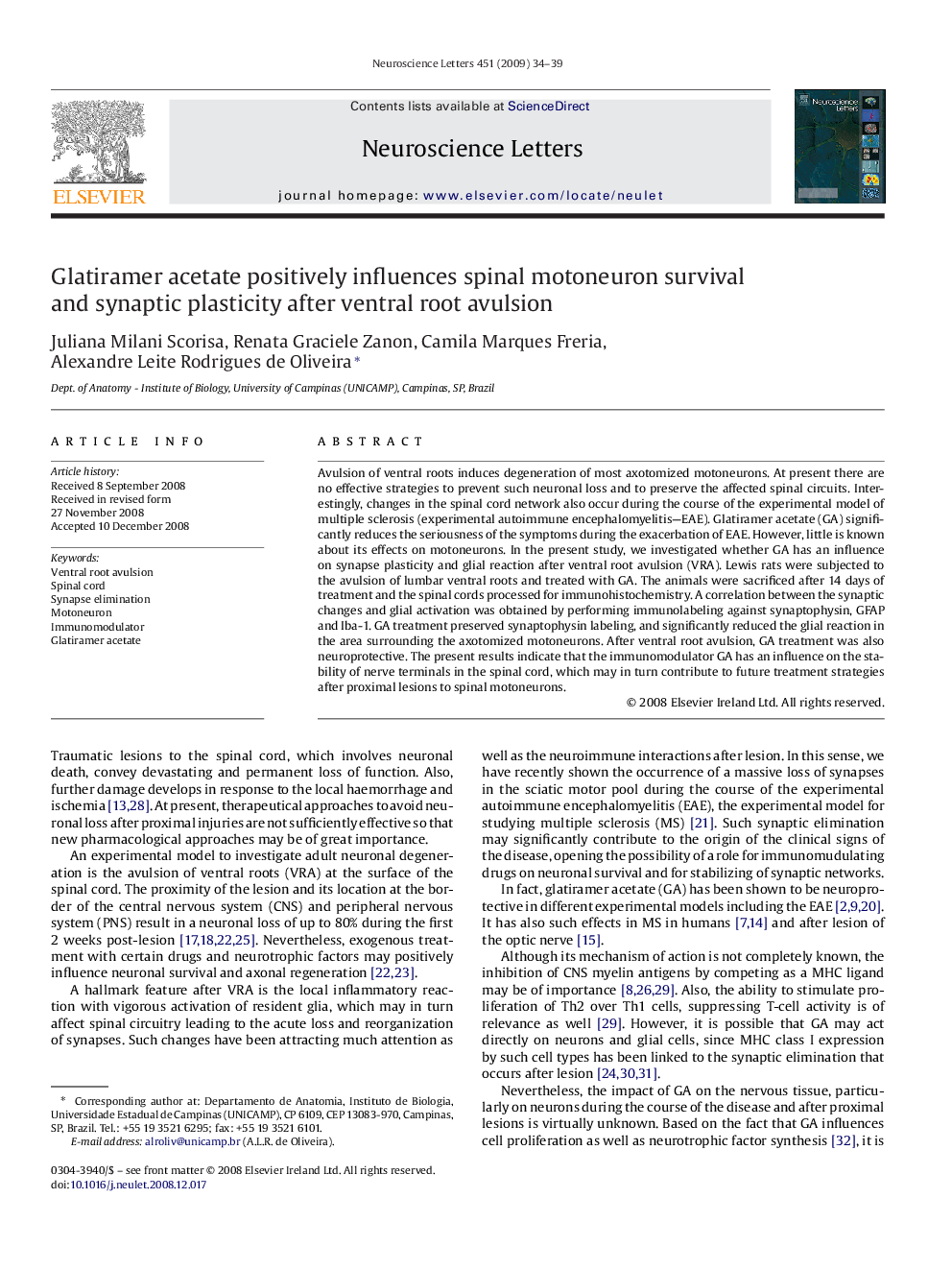| Article ID | Journal | Published Year | Pages | File Type |
|---|---|---|---|---|
| 4347816 | Neuroscience Letters | 2009 | 6 Pages |
Avulsion of ventral roots induces degeneration of most axotomized motoneurons. At present there are no effective strategies to prevent such neuronal loss and to preserve the affected spinal circuits. Interestingly, changes in the spinal cord network also occur during the course of the experimental model of multiple sclerosis (experimental autoimmune encephalomyelitis—EAE). Glatiramer acetate (GA) significantly reduces the seriousness of the symptoms during the exacerbation of EAE. However, little is known about its effects on motoneurons. In the present study, we investigated whether GA has an influence on synapse plasticity and glial reaction after ventral root avulsion (VRA). Lewis rats were subjected to the avulsion of lumbar ventral roots and treated with GA. The animals were sacrificed after 14 days of treatment and the spinal cords processed for immunohistochemistry. A correlation between the synaptic changes and glial activation was obtained by performing immunolabeling against synaptophysin, GFAP and Iba-1. GA treatment preserved synaptophysin labeling, and significantly reduced the glial reaction in the area surrounding the axotomized motoneurons. After ventral root avulsion, GA treatment was also neuroprotective. The present results indicate that the immunomodulator GA has an influence on the stability of nerve terminals in the spinal cord, which may in turn contribute to future treatment strategies after proximal lesions to spinal motoneurons.
